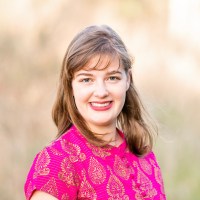Jeans and your favorite tee might cut it for casual camping, but if you’re starting to become serious about spending time with nature, it’s time to think about investing in proper camping clothes. Modern streetwear or style pieces often aren’t sturdy enough for the rigors of the outdoors, and you definitely don’t want to be the guy to get caught in the rain with only one pair of jeans. Fortunately, we’ve compiled our favorite tips for choosing the best camping clothes. Let’s take a look!
Do you need to have specialized camping clothes?

While specialized camping clothes offer benefits like enhanced durability, moisture management, and technical features, you don’t always need to invest in them for short or casual trips. Regular outdoor wear can suffice, but for longer or more challenging expeditions, investing in quality camping clothes is worth it for your comfort and safety.
If you’re looking to upgrade your camping clothes, consider purchasing your clothes in layers. Having a good layering system is going to keep you warm, lightweight, and dry throughout your whole trip. The best part is, you can always adjust your system depending on the weather so you’re always comfortable. Check out this article for a more detailed look at putting together a layering system, but here it is in a nutshell:
The base layer
This is the layer that sits closest to your skin. You’ll want to choose a moisture-wicking fabric like Merino wool instead of cotton so you stay dry. Examples of great base layers include skin-tight, long-sleeve thermal tops and lightweight leggings or thermal pants.
The mid Layer
The mid layer is typically made of fleece, down, or synthetic insulation that traps heat to keep you warm. This might not be super applicable during the warm summer months, but you won’t want to skimp on the mid-layer during fall or winter. Fleece jackets or insulated vests are great examples of the mid-layer.
The outer layer
The outer layer protects against wind, rain, and snow. You never know when the forecast will get cloudy, so having an outer layer such as a hardshell jacket or a rain jacket on hand will make or break your camping experience.
Things you should consider when buying clothes for camping

Even if you’re looking at an outdoorsy brand, there are a few things you should keep an eye out for while you shop. Here are our top tips:
Consider your activity
The best camping clothes for you will depend on the types of activities on the schedule.
If you’re going hiking, pack breathable, moisture-wicking clothes that allow for a full range of movement. Water activities like fishing and kayaking will need quick drying. But most of all, you won’t want to overlook your sleepwear.
It might be tempting to leave your PJs at home and just sleep in the same clothes you brought, but avoid wearing the clothes you’ve been active in all day since they may be damp or dirty, which can affect your warmth and hygiene. Be sure that your sleepwear complements your sleeping bag rating so you’re not too hot or too cold.
Check the tag for the material blend
So how do you know what kind of fabric to choose for your activity? There are three common materials to keep an eye out for.
Synthetic fibers like polyester and nylon are moisture-wicking, quick-drying, and lightweight. However, they can retain odors and aren’t breathable. There is a place for synthetics, though. They’re great for wet conditions.
For a more eco-friendly option, look for wool. Merino wool in particular is extra soft and can retain warmth even when it’s wet. It’s softer and less itchy than normal wool, and is odor resistant. These are great for base layers, but you’ll likely need to handwash them. These fabrics are ideal for cooler conditions.
Cotton is soft, breathable, and comfortable, but it isn’t ideal for camping because it retains moisture and is slow-drying. Since jeans are often made from cotton, this means that you’ll probably want to opt for something else if you’re expecting rain or are
Look for protection
Camping clothes do more than keep you comfortable — they keep you safe! They provide protection in a few critical ways. Insect-repellent clothing can protect against many kinds of bites, including mosquitoes and ticks. There are also many brands that offer UV-protective fabrics that shield you from harmful sun rays. Consider your trip and see if these features would be useful for you!
Practical features
Lots of camping or hiking clothes come with modern features for practicality. These can be pockets for storage, reflective stripes for visibility, ventilation such as pit zips and mesh panels, or even adjustment elements like hoods, cuffs, and hems that can be loosened or tightened for a better fit.
Upgrading your camping gear is bound to take your experience to the next level. We hope these tips get you through your shopping trip!




